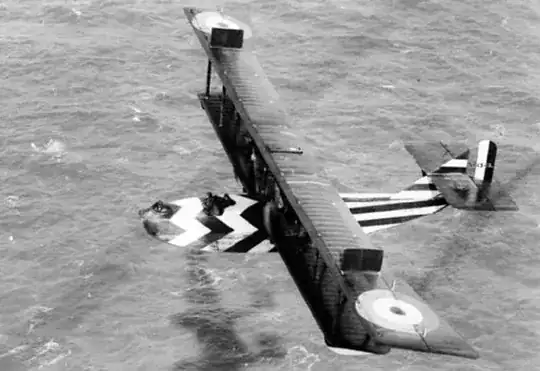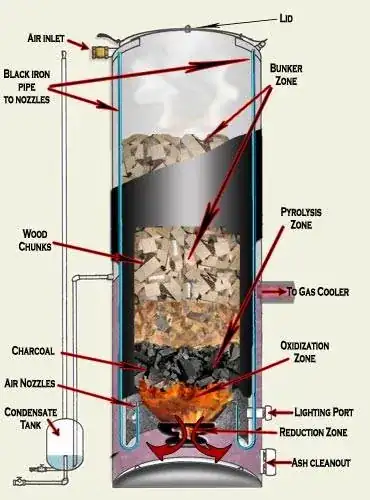I have a post-apocalyptic scenario, set in the ruins of an American metropolis with flooded streets. Boats are used most of the time, but aircrafts have advantages, for battle or if you have to get on top of some skyscraper ruin.
With the apocalypse some decades ago, I tend to compare the post apocalyptic world to the situation in present-day developing world countries:
The rich can afford advanced weapons and lifestyle while the poor live as farmers or fishers under primitive circumstances (mixing in some exceptions that are necessary and easily available).
The only difference: While a nowadays those things are ordered from industrialized countries, there is no industrialized country left (or at least known) in the post apocalyptic world. Instead scavenged technology is filling that gap, if it can be reconditioned and run.
**For one-person flights I discovered a really badass and simple aircraft that actually works: the Paravelo** (and here is another clip of the takeoff).
I need big aircrafts for transportation, travel and battle, that can land on water and on dry land.
More specific:
One impressive looking flagship (kind of a flying siege tower) and
some transporters for soldiers and goods.
I thought about going with airships but if you have completely different ideas for a physically working badass aircrafts that are not too technologically advanced just post them below.
- Materials:
Scavenged materials are an obvious choice, living in the remains of a metropolis.
Empty gasoline barrels (metal or plastic) or plastic tubes as floating bodies for the catamaran. Aluminum traffic signs (big highway lane/direction signs) as floor or walls. Some plastic sheets maybe somehow for the actual balloon.
On the other hand there are natural resources: Bamboo is very light but bending and strong, it could be used for some scaffolding constructions (cf. Chinese skyscraper scaffoldings; there actually was an airship with a bamboo frame) and maybe rattan mattes/basket constructions.
Do you have any more ideas for materials/constructions that could be used (either natural or scavenged materials)?
- Buoyancy:
A lifting gas should be easy and cheap to produce with primitive means (cf. retrieving helium while most of the earth is under water?) and safe enough not to burst into flames by one burning arrow (cf. hydrogen).
(Not saying it may not be flammable at all - storywise nothing is more boring than an invincible weapon. It only shouldn't be too easy to shoot them down.)
I thought about using hot air or steam for the lift, ideally by burning wood or straw (one of the first experimental airships in France burned straw and fabric) or another resource that is easy to produce in a pre-industrial society. Is that efficient enough to keep an airship flying for some hours with 7 to 15 people aboard and some transported goods and weapons, given the materials used in point 1? (On the other hand I don’t have an aluminum frame or a luxurious, hotel-like lounge as provided in the Hindenburg). Especially carrying wood (to provide heat) seems to be way overweight for an airship. How could a steam-balloon work with limited technical possibilities?
- Drive:
I guess the use of scavenged material and technology can be compared to non-renewable resources in our time: As long as there is enough of them it's more self-evident to use them instead of inventing/producing own stuff that is more costly, takes more time to build and works less effective.
Gasoline is not very durable but electricity is quite easy to produce and there are other things to burn (like alcohol or even coconut oil) to keep old, modified motors running.
Otherwise a hot air turbine or a steam engine could be built into the oven heating the balloon.
(Sails don’t work for airships because there is not enough water/air resistance to choose a direction willingly, the whole ship would just be gone with the wind all the time.)
Especially the drive by manpower is interesting: People are quite inefficient as power source but there are (special lightweight, one-person) pedal-powered blimps. So - could one make that work and even be agile and quick? An air galley (a modified version of the normal airships with pedals for the propellers) would make an interesting aircraft for slave traders...
- Shape:
How important is streamline for an airship? The airship doesn't have to win races but should be able to keep up with sailing ships on the water. Would a catamaran boat with a cabin on top as gondola be a big disatvantage, compared to the classical fantasy monohull airship-ship-gondolas?
- Floating body:
Do airships need a floating body (not a balloon but a keel or catamaran boat hull or a raft made of plastic cans) to land on water?
I know that is more than one question, but they are linked somehow (like using an oven for a thermal airship could be combined with a hot air turbine for propellers)
Don't forget, stories are about conflict. So some weakness and level of risk in any means of transportation, weapon or defense are a positive thing. It means there is some danger for your hero (which keeps your audience/player invested) and a possibility to fight the antagonists back.




What do you mean by requiring 20th century technology? Motors, light, gas-tight fabric for the envelope or lightweight materials for the airship frame? The Montgolfière relied on heat (but was not dirigible of course and didn't have to carry much weight), Stanley Spencer even created an airship frame of bamboo (but that was also a lightweight one-person-only scaffolding).
– Creative Frankenstein Aug 16 '19 at 03:22